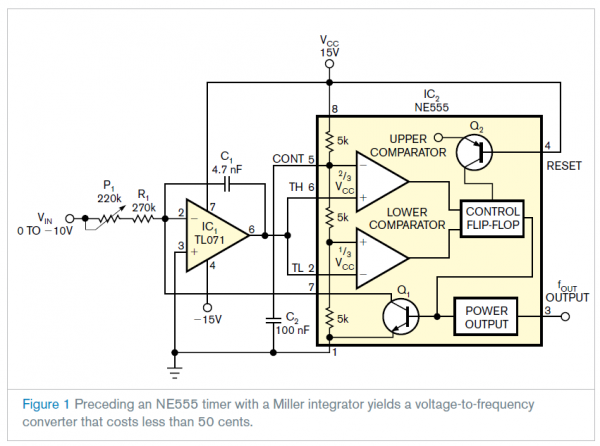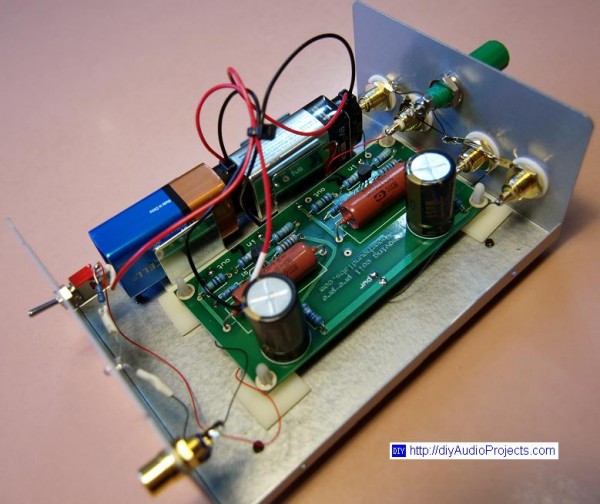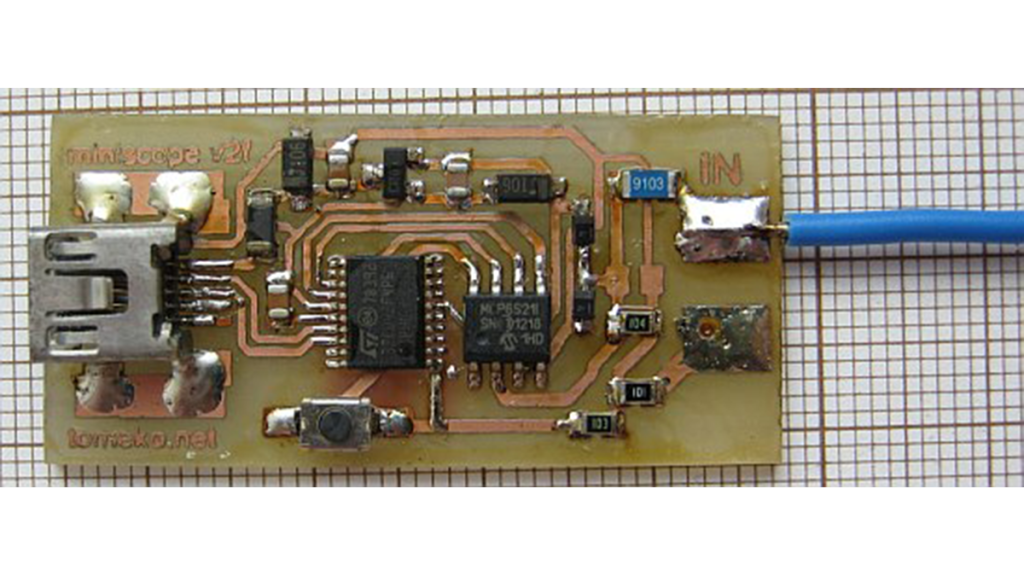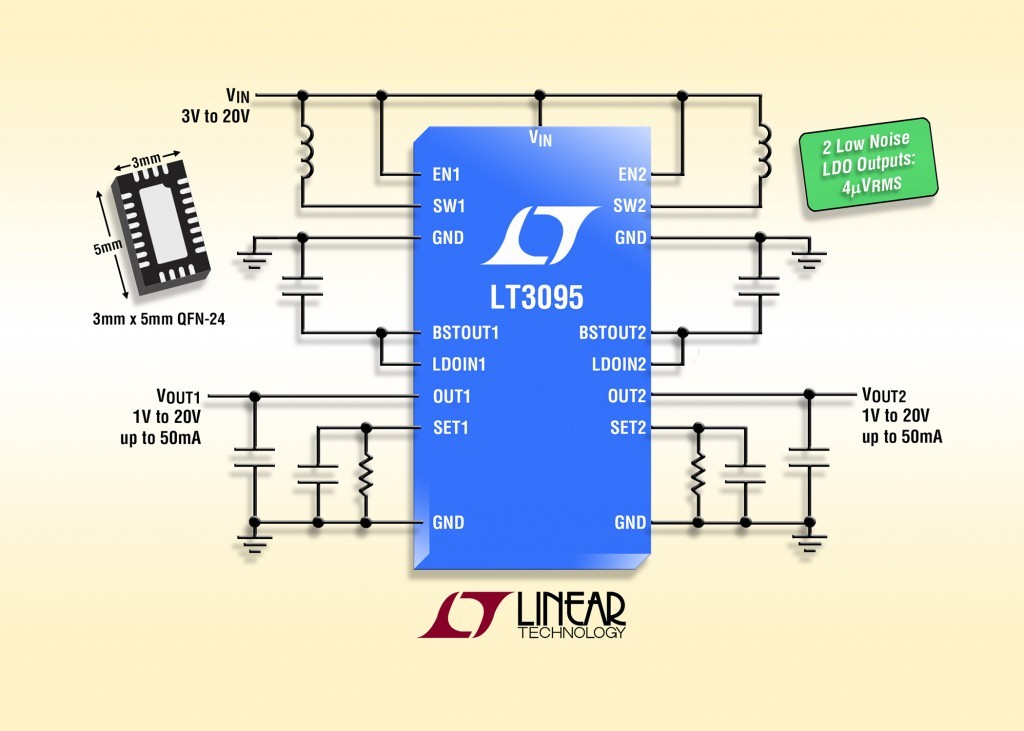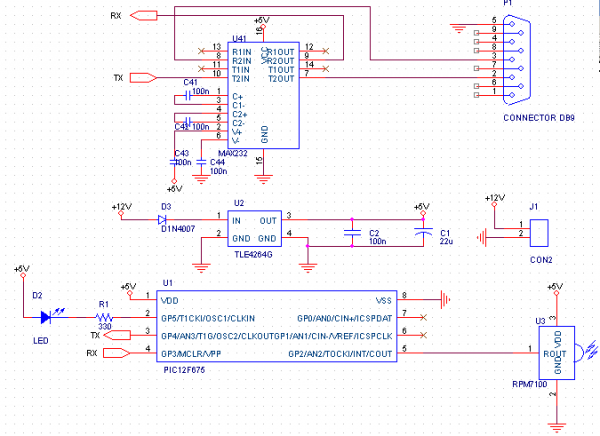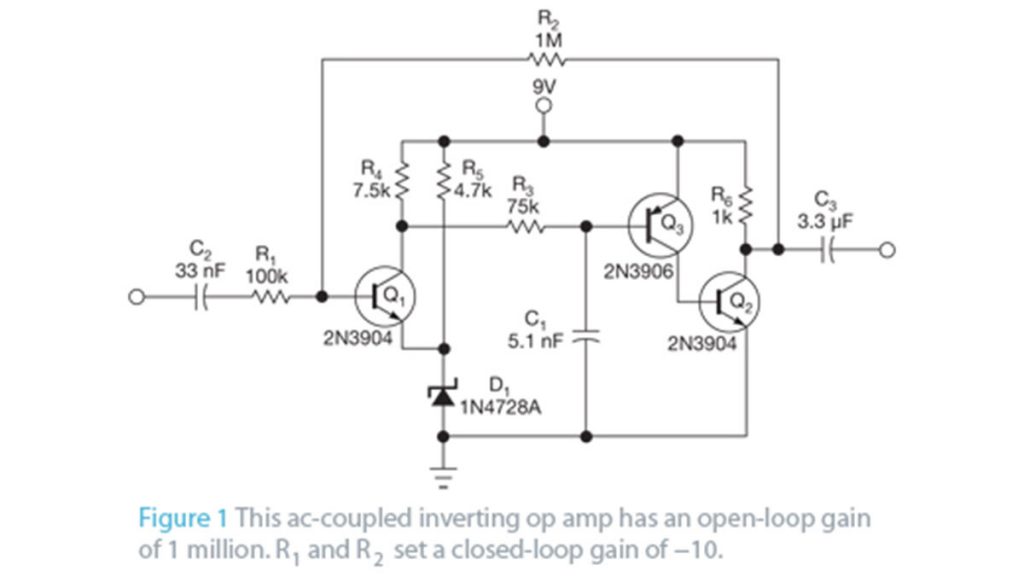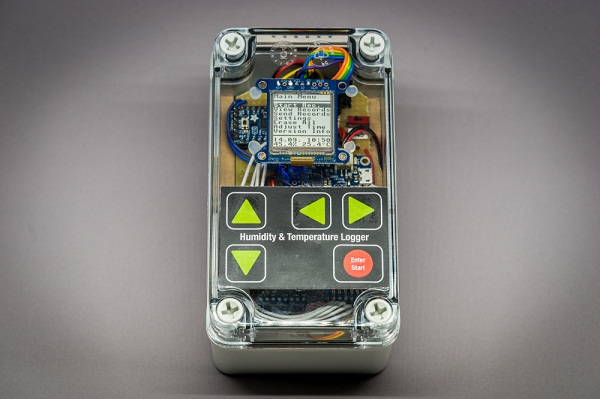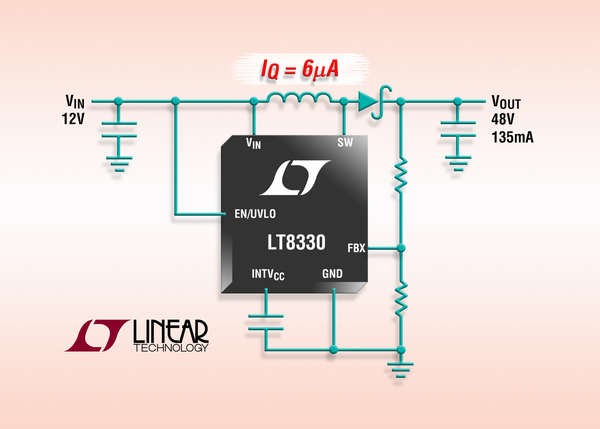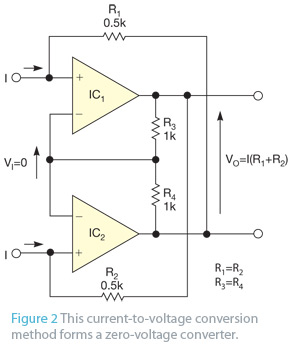NE555 timer sparks low-cost voltage-to-frequency converter
In 1971, Signetics—later Philips—introduced the NE555 timer, and manufacturers are still producing more than 1 billion of them a year. By adding a few components to the NE555, you can build a simple voltage-to-frequency converter for less than 50 cents. The circuit contains a Miller integrator based on a TL071 along with an NE555 timer […]
NE555 timer sparks low-cost voltage-to-frequency converter Continue Reading

